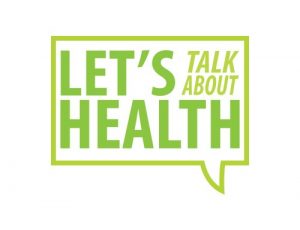(Akiit.com) As many as 80,000 different chemicals are bombarding us every day. One of the most treacherous of them all is Dioxin, the name given to a group of persistent, very toxic chemicals.
“Dioxins” collectively refers to hundreds of chemical compounds that share certain structures and biological characteristics. Dioxins mainly enter the food chain as by-products of industrial processes. To a lesser extent, they also come from natural processes such as volcanoes and forest fires. They contaminate land and sea, are consumed in feed, move up the food chain, and end up in the fatty parts of meat, dairy products, and seafood. Dioxins accumulate in fatty tissues in the human body, and increase the risk of human cancer more than any other industrial chemical.
Over the past century humans have introduced a large nu mber of chemical substances into the environment. Some are the waste from industrial and agricultural processes. Some have been designed as structural materials and others have been designed to perform various functions such as healing the sick or killing pests and weeds. Obviously, some chemicals are useful, but many are toxic and their harm to the environment and our health far outweighs their benefit to society.
mber of chemical substances into the environment. Some are the waste from industrial and agricultural processes. Some have been designed as structural materials and others have been designed to perform various functions such as healing the sick or killing pests and weeds. Obviously, some chemicals are useful, but many are toxic and their harm to the environment and our health far outweighs their benefit to society.
Cancer is caused by changes in a cell’s DNA – its genetic “blueprint.” Some of these changes may be inherited from our parents, while others may be caused by outside exposures, which are often referred to as environmental factors. Substances and exposures that can lead to cancer are called carcinogens. Some carcinogens do not affect DNA directly, but lead to cancer in other ways. For example, they may cause cells to divide at a faster than normal rate, which could increase the chances that DNA changes will occur.
Carcinogens do not cause cancer in every case, all the time. Substances labeled as carcinogens may have different levels of cancer-causing potential. Some may cause cancer only after prolonged, high levels of exposure.
The alarming truth is that this phenomenon impacts our society in disproportionate ways.
It’s a statistical fact: people who live, work and play in America’s most polluted environments are commonly people of color and the poor. Environmental justice advocates have shown that this is no accident. Communities of color, which are often poor, are routinely targeted to host facilities that have negative environmental impacts — say, a landfill, dirty industrial plant or truck depot. The statistics provide clear evidence of what the movement rightly calls “environmental racism.”
Toxic chemicals in our environment, such as mercury, lead, and certain manmade chemicals, have been linked to cancer, birth defects and brain impairments. Reducing or eliminating the load of these dangerous chemicals in the products we buy, the air we breathe, the food we eat and the water we drink can help reduce the toll of human disease and suffering.
The really scary part is that dioxins are also everywhere, particularly in the food supply. The noxious chemicals are an unintended byproduct of industrial processes that burn chlorine, especially chemical factories and garbage and medical waste incinerators. Dioxins get spewed into the air, where they eventually settle into soil, water, and plants. Animals ingest dioxins as they graze, and the chemicals build up in the creatures’ fatty tissues.
That’s bad news for animals – and for the people that eat them. People regularly consume a helping of dioxins whenever they eat eggs, fish, meat, and dairy products. According to the EPA, 96 percent of human exposure to dioxins occurs through the food supply. A person eating one fast-food hamburger per week has a 12 chance per million risk of developing a Dioxin-induced cancer.
Studies even suggest that virtually every single American contains measurable levels of dioxins the body, including babies, who are oftentimes born pre-polluted.
Because dioxin is fat-soluble, it “bio accumulates,” climbing up the food chain. A North American eating a typical North American diet will receive 93 percent of their dioxin exposure from meat and dairy products (23 percent from milk and dairy alone; the other large sources of exposure are beef, fish, pork, poultry and eggs). In fish, these toxins bioaccumulate up the food chain so that dioxin levels in fish are 100,000 times that of the surrounding environment.
How to avoid them? One way is to eat less high-fat meats, dairy foods, and seafood.
The best way to avoid dioxin exposure is to reduce or eliminate your consumption of meat and dairy products by adopting a vegan diet.
According to the EPA draft report on dioxin’s health effects, the levels of dioxin-like compounds found in the general population may cause a lifetime cancer risk as high as one in 1,000. This is 1,000 times higher than the generally “acceptable” risk level for cancer of 1 in a million.
Environmental justice continues to be an important part of the struggle to improve and maintain a clean and healthful environment, especially for those who have traditionally lived, worked and played closest to the sources of pollution.
Take good care of yourself and live the best life possible!
Remember, I’m not a doctor. I just sound like one.
Columnist; Glenn Ellis
Official website; http://www.glennellis.com








Leave a Reply